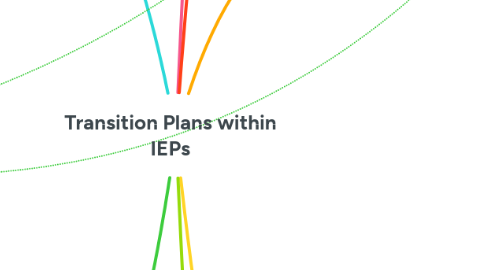Transition Plans within IEPs
저자: John Kirstein


1. Transition to School Following a Prolonged Medical Absence
1.1. Advance Preparation: Communicate with parents and medical personnel to gather information about the student’s needs and obtain consent to share relevant medical information.
1.2. Staff Training: Arrange in-service training for teachers and staff on the student’s specific medical condition and necessary accommodations.
1.3. Initial Assessments: Conduct assessments to evaluate the student’s current level of functioning.
1.4. Remedial Support: Organize remedial sessions to address any learning gaps identified in the assessments.
1.5. Buddy System: Implement a buddy system to help the student adjust to the new school environment and provide social support.
1.6. Gradual Integration: Consider shortening the school day initially to support the student's endurance and overall adjustment.
1.7. Ongoing Communication: Maintain regular communication with parents and staff to monitor the student’s progress and adjust the transition plan as necessary.
2. Daily transitions
2.1. Establish Routine: Create a consistent daily schedule that includes clear expectations for transitions.
2.2. Use Visual Supports: Incorporate visual schedules and cue cards to help students understand and anticipate transitions.
2.3. Give verbal or visual warnings a few minutes before a transition occurs. It's "built into" the assistive technology some teachers use with their smartboards
2.4. Allow specific time for students to gather materials and mentally prepare for the change.
2.5. I usually provided an act students look forward to as soon as they have everything ready for the transition. It could be collecting their "tickets" we give students to use at the school store.
2.6. Some students have a "buddy" to assist them with the transition
3. Over time educators may see patterns or trends develop in the ongoing assessment and reporting; that can be interpreted and used in planning a student's programming
4. There is an ongoing need to communicate the UDL strategies and practices that support students' behavioural needs/patterns/dynamics-with-other-students best
5. Entry to School
5.1. Children enter school with varying backgrounds and developmental stages, requiring early planning for smooth transitions.
5.2. Communication among parents, educators, and community members is key to sharing information about the child.
5.3. If special education services are needed, a case conference should be held before school starts to discuss the child’s needs and program.
5.4. Ongoing collection of information on the child’s progress is essential.
5.5. Collaboration between educators, families, and communities fosters consistent learning experiences to build confidence and set a foundation for future development.
5.5.1. CRP: during these conversations, practice sensistivity, curiosity and a "beginners mindset" to allow parents to clarify their child's interests, strengths and needs
6. Grade to grade transitions
6.1. outline specific goals and actions to help students manage new expectations and classroom environments
6.2. preparing students for the curriculum changes, fostering relationships with new teachers, and addressing any learning gaps
6.3. Collaboration between current and future educators, parents, and any support staff ensures continuity in services and accommodations, tailored to the student's evolving needs and abilities.
6.3.1. CRP: Include information about student's community and important "touch stones" supporting the student's sense of belonging and mental health
